Juanda International Airport
| Juanda International Airport Bandar Udara Internasional Juanda | |||||||||||
|---|---|---|---|---|---|---|---|---|---|---|---|
|
| |||||||||||
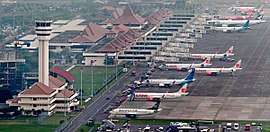 | |||||||||||
| Summary | |||||||||||
| Airport type | Public | ||||||||||
| Owner | Government of Indonesia | ||||||||||
| Operator | PT Angkasa Pura I | ||||||||||
| Serves | Greater Surabaya | ||||||||||
| Location | Sidoarjo Regency, East Java, Indonesia | ||||||||||
| Opened |
| ||||||||||
| Hub for | |||||||||||
| Time zone | WIB (UTC+07:00) | ||||||||||
| Elevation AMSL | 9 ft / 3 m | ||||||||||
| Coordinates | 07°22′47″S 112°47′13″E / 7.37972°S 112.78694°ECoordinates: 07°22′47″S 112°47′13″E / 7.37972°S 112.78694°E | ||||||||||
| Website | juanda-airport.com | ||||||||||
| Maps | |||||||||||
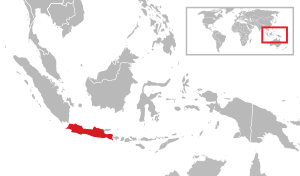 Java region in Indonesia | |||||||||||
 SUB Location of airport in East Java / Indonesia 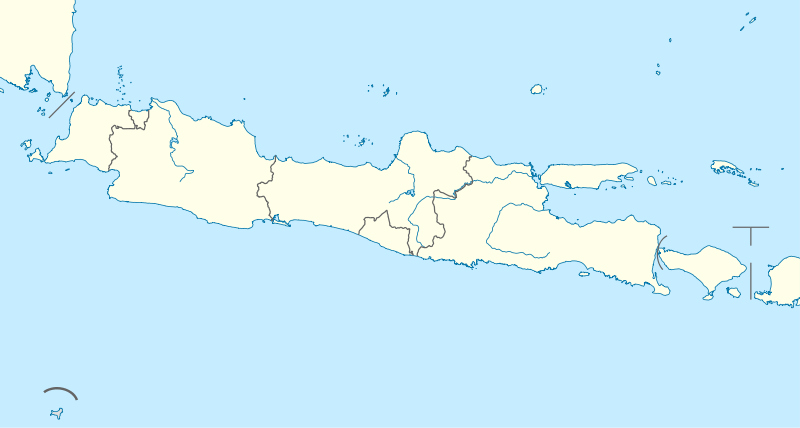 SUB SUB (Java)  SUB SUB (Indonesia) 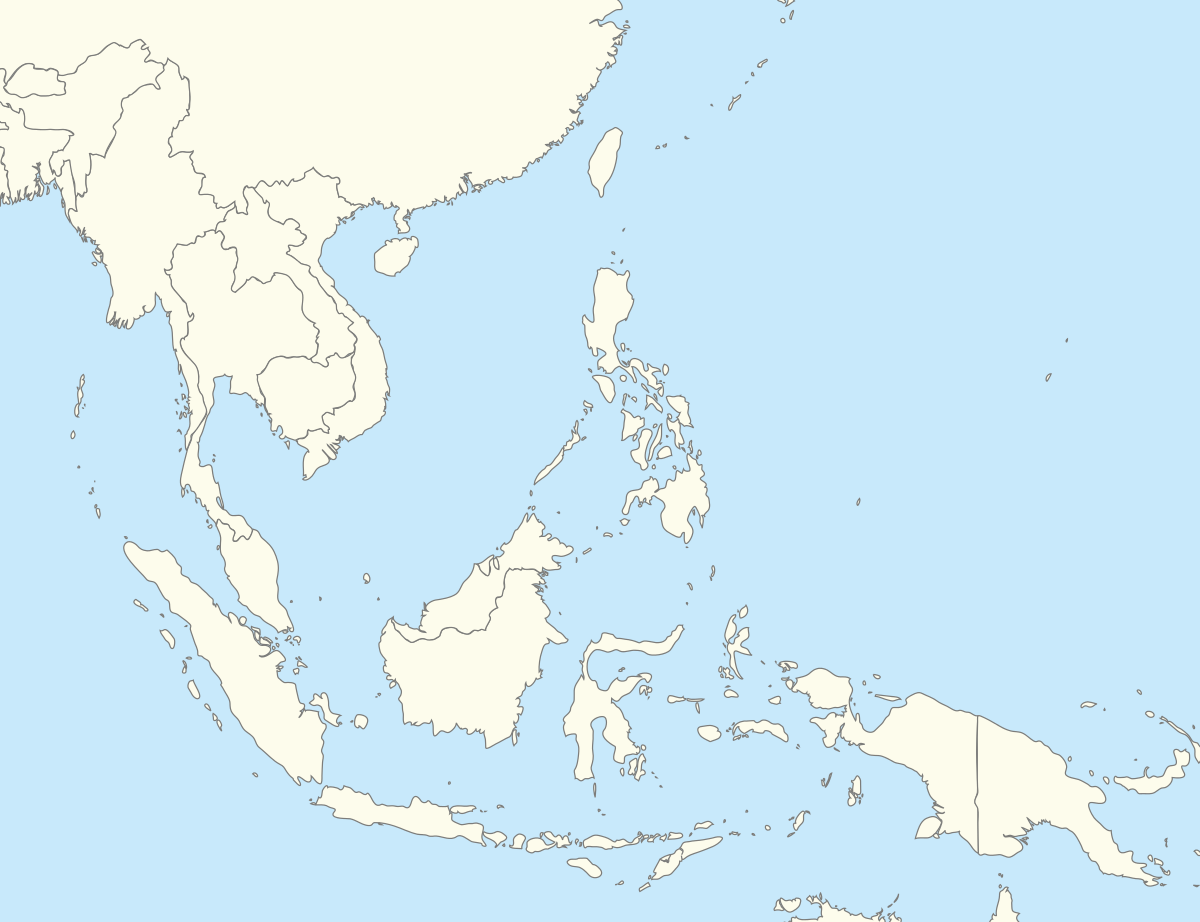 SUB SUB (Southeast Asia) | |||||||||||
| Runways | |||||||||||
| |||||||||||
| Statistics (2017) | |||||||||||
| |||||||||||
Juanda International Airport (JIA) (Indonesian: Bandar Udara Internasional Juanda) (IATA: SUB, ICAO: WARR), is an international airport located in Sedati, Sidoarjo. It is now the fifth largest airport in Indonesia (after Soekarno-Hatta, Kertajati, Kualanamu & Ngurah Rai) and third busiest airport in Indonesia. This airport is located approximately 12 kilometers (8 miles) from Surabaya and serves the Gerbangkertosusila, the metropolitan area of Surabaya plus extended urban area. Juanda International Airport is operated by PT Angkasa Pura I. The airport takes its name after Djuanda Kartawidjaja, the last Prime Minister of Indonesia who had suggested development of this airport. In 2013, the airport serves about 400 aircraft per day.[1]
Currently, Juanda International Airport is the hub of Citilink, Garuda Indonesia, Indonesia AirAsia X, Lion Air, and Sriwijaya Air along with Soekarno–Hatta International Airport. Juanda International Airport will become one of the main airports in Indonesia for ASEAN Open skies.[2]
In 2014, Juanda International Airport becomes the world's 10th best in Airport Service Quality by Airport Council International among 79 airports with passengers capacity between 5-15 million a year.[3] In Q1 2015, the airport becomes the world's 7th best in Airport Service Quality by ACI.[4]
History
Opened in 1964 as a naval air base of Indonesia. It replaces the previous airport in Morokrembangan, near Tanjung Perak harbor. It was originally used as home base for Indonesian Navy's fleet of Ilyushin Il-28 and Fairey Gannet. In its development it was also used for civil aviation. And PT Angkasa Pura I handled the management and operation since January 1985. On December 24, 1990 Juanda Airport was gained international airport status after the opening of the international terminal. Previously, since December 1987, the airport has served flights to Singapore, Hong Kong, Taipei, and Manila.[5]
Development of airport city
On February 25, 2015, Indonesia President Joko Widodo agreed to develop Juanda Airport City which consists such as an additional two runways to become a triple runway airport, and an integrated connection between Gubeng railway station with the airport via an elevated railway.[6][7] About 6,000 hectares of land have been prepared for the expansion of the airport - where in 1,500 hectares will be used to construct two additional runways, and Juanda Airport's Terminal 3, while the remaining area will be used to construct the Airport City and the Ultimate Terminal Building.[8]
The new area for Juanda Airport is estimated to be 1,700 hectares and will be located in the northern part of the airport.[9]Construction of two runways by will require the reclamation of about four kilometers stretch of land along Java's northern coastline. The land acquisition is expected to be completed by 2018. Development consists of three phases;
- First phase is the confirmation of the masterplan, land acquisition, reclamation for runway 2 and construction of runway 2.
- Second phase is the development of Terminal 1, reclamation for runway 3, construction of runway 3, and accessibility from toll roads and terminal.
- Third phase will be building an Ultimate Terminal and airport city supporting infrastructure.[10]
Terminals and runway
At present, Juanda International Airport has 2 terminals. A new three-storey terminal building was opened in October 2006, which is now Terminal 1. The building has a capacity of eight million passengers per year and features a 51,500-square-metre (554,000 sq ft) domestic passenger terminal, a 20,200-square-metre (217,000 sq ft) international terminal and 11 aerobridges. The terminal used a mix of high hat roofs from Rumah adat Sumba as well as Java-Malay architecture themes. Terminal 1 is used for all domestic flights, except Garuda Indonesia and Indonesia AirAsia flights.
Terminal 2 was built by demolishing the old terminal building, which was opened on February 14, 2014. The architecture of T2 is modern with curved features when compared to Terminal 1. Terminal 2 has an area of 49,500 square meters and 8 aerobridges, with a capacity to accommodate 6 million passengers per year. Terminal 2 is used for all international flights, Garuda Indonesia and Indonesia AirAsia domestic and international flights.
The airport has separate 5,300-square-metre (57,000 sq ft) administration building, including a 15-storey control tower, and a two-storey cargo building with domestic and international cargo sections, capable of handling 120,000 tonnes (120,000 long tons; 130,000 short tons) of cargo a year. The apron with an area of 148,000 square metres (1,590,000 sq ft) can handle 18 aircraft simultaneously, including two wide body, 11 medium and five small aircraft. The airport has a single runway of 3,000 by 55 metres (9,843 ft × 180 ft). There are two 3,000-by-30-metre (9,843 ft × 98 ft) parallel taxiways, including five exit taxiways (30 m wide) and four connecting taxiways (also 30 m). The airport has a parking area of 28,900 m² parking area that can accommodate more than 3,000 vehicles.
Airlines and destinations
Passenger
Cargo
| Airlines | Destinations |
|---|---|
| My Indo Airlines | Singapore |
| Republic Express Airlines | Jakarta–Soekarno–Hatta |
Statistics
In 2010, the airport handled 11 million passengers, although the capacity was 6 million passengers and the Air Traffic Controller radar system is only able to track 21 aircraft per hour, but at peak hour handled 40 to 45 aircraft landing and taking off.[23] The following are statistics for the airport from 1999 to 2013. In addition to this, it is noted that, in 2006, the domestic sector between Surabaya and Jakarta is the fourth-busiest air route in Asia with over 750 weekly flights.
| Year | Total passengers | Cargo (tons) | Aircraft movements |
|---|---|---|---|
| 1999 | 2,137,353 | 40,549 | 52,284 |
| 2000 | 2,712,074 | 31,185 | 54,154 |
| 2001 | 3,301,435 | 37,767 | 62,141 |
| 2002 | 4,746,113 | 43,089 | 75,921 |
| 2003 | 6,584,711 | 42,910 | 82,779 |
| 2004 | 8,562,747 | 63,950 | 97,421 |
| 2005 | 8,217,415 | 66,647 | 99,485 |
| 2006 | 8,986,650 | 71,574 | 91.209 |
| 2007 | 8,823,228 | 58,815 | 87,687 |
| 2008 | 9,122,196 | 62,289 | 69,726 |
| 2009 | 10,562,906 | 62,357 | 76,754 |
| 2010 | 12,072,059 | 76,774 | 84,958 |
| 2011 | 13,778,287 | 95,146 | 103,846 |
| 2012 | 16,447,912 | 102,133 | 141,365 |
| 2013 | 17,683,955 | 121,935 | 155,421 |
| 2014 | 18,071,633 | 92,439 | 117,825 |
| 2015 (estimated) | 18,911,256 | 130,398 | 166,208 |
Source : PT (persero) ANGKASA PURA 1 (in Indonesian)
Ground transport
Juanda Airport is connected to Waru-Juanda Toll Road to Surabaya, which is about 15 kilometers from the airport. DAMRI buses are provided by the local government to deliver passengers to Surabaya. Fixed tariff taxis are available to various destinations in Surabaya and surrounding areas including Malang, Blitar, Jember, Tulungagung. Taxi tickets can be purchased at the counter located at the airport exit. A monorail will be built and integrated along with the 3 and 4 terminals. The length of the rail is about 20 km. The service will have 29 stops that distance between halts 1.5 km to 2 km.
Accidents and incidents
- On March 4, 2006, Lion Air Flight 8987, a McDonnell Douglas MD-82 from Ngurah Rai International Airport of Denpasar, crashed after landing at Juanda International Airport. Reverse thrust was used during landing, although the left thrust reverse was stated to be out of service. This caused the aircraft to veer to the right and skid off the runway, coming to rest about 7,000 feet (2,100 m) from the approach end of the runway. There were no fatalities, but the aircraft was badly damaged.
- On February 21, 2007 Flight 172, an Adam Air Boeing 737-300 aircraft flying from Jakarta to Surabaya with registration PK-KKV (c/n 27284), had a hard landing at Juanda International Airport, resulting in structural failure of the aircraft.[24]
- On April 13, 2010, Cathay Pacific Flight 780, an Airbus A330-300 from Juanda International Airport to Hong Kong landed safely after both engines failed due to contaminated fuel, which was uploaded at Surabaya.[25]
- On February 1, 2014, Lion Air Flight 361, a Boeing 737-900ER (registration PK-LFH), from Balikpapan Sultan Aji Muhammad Sulaiman Airport to Juanda International Airport in Surabaya, with 222 passengers and crew on board, landed hard and bounced four times on the runway, causing a tail strike and substantial damage to the plane. There were no fatalities, but two passengers were seriously injured and three others had minor injuries.[26]
Gallery
 Terminal 1 - 2nd Floor
Terminal 1 - 2nd Floor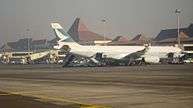 A Cathay Pacific Airbus A330-300 at Juanda
A Cathay Pacific Airbus A330-300 at Juanda On the apron, Saudi Airlines Boeing 747-300 refueling and reloading to serve Indonesian Hajj pilgrims to Mecca.
On the apron, Saudi Airlines Boeing 747-300 refueling and reloading to serve Indonesian Hajj pilgrims to Mecca.
References
- ↑ "Soekarwo : Bandara Juanda Butuh Double Runway". 9 January 2014.
- ↑ Home. "Kemenhub; Lima Bandara Disiapkan Untuk Asean Open Sky". Beritatrans.com. Retrieved 2016-05-19.
- ↑ Feby Dwi Sutianto (April 24, 2015). "Layanan Bandara Ngurah Rai Terbaik No.7 Dunia".
- ↑ "Bandara Ngurah Rai Peringkat Ketiga Terbaik Dunia". June 6, 2015.
- ↑ "Juanda International Airport, Indonesia". Retrieved April 29, 2015.
- ↑ "Presiden Jokowi Setujui Proyek Juanda Airport City". February 26, 2015.
- ↑ "Presiden Jokowi Setujui Proyek Juanda Airport City". February 26, 2015.
- ↑ "Surabaya to Reclaim Northern Coastline to Expand Juanda Airport". Tempo. Retrieved 27 December 2017.
- ↑ "PT Angkasa Pura I to improve Juanda International Airport". The Jakarta Post. Retrieved 27 December 2017.
- ↑ "Juanda Airport to Build Terminal III, New Runway". Tempo. Retrieved 27 December 2017.
- ↑ https://agent.lionair.co.id/LionAirAgentsPortal/Default.aspx
- ↑ Rute baru Kertajati
- ↑ "8 Maret, Citilink Operasikan Rute Penerbangan Surabaya-Jeddah". Indo-Aviation.com. Archived from the original on 20 February 2016. Retrieved 19 May 2016.
- ↑ Garuda Indonesia resmikan penerbangan langsung Surabaya-Madinah
- ↑ http://www.routesonline.com/news/38/airlineroute/272641/garuda-indonesia-adds-new-domestic-sectors-in-2q17/
- ↑ http://www.routesonline.com/news/38/airlineroute/271518/indonesia-airasia-x-schedules-surabaya-penang-flights-in-march-2017/?highlight=Indonesia%20Airasia%20X
- ↑ https://agent.lionair.co.id/LionAirAgentsPortal/Default.aspx
- ↑ https://www.instagram.com/p/BabCHGajttP/ndar Seri Begawan]] ?taken-by=fly.namair
- ↑ https://agent.sriwijayaair.co.id/SJ-Eticket/login.php?action=in
- ↑ https://agent.sriwijayaair.co.id/SJ-Eticket/login.php?action=in
- ↑ https://agent.lionair.co.id/LionAirAgentsPortal/Default.aspx
- ↑ https://agent.lionair.co.id/LionAirAgentsPortal/Default.aspx
- ↑ The Jakarta Post (2011-07-29). "Major RI airports bursting at the seams: Inaca". The Jakarta Post. Retrieved 2016-05-19.
- ↑ "Crash follows safety concerns". The Daily Telegraph. March 7, 2007. Retrieved February 4, 2014.
- ↑ "Pilots reveal death-defying ordeal as engines failed on approach to Chek Lap Kok". South China Morning Post. 20 April 2014. Retrieved 21 April 2014.
- ↑ "Lion Air Flight JT 361". aviation-safety.net. Retrieved 16 April 2014.
External links
| Wikimedia Commons has media related to Juanda International Airport. |
- PT. Angkasa Pura I: Juanda Airport (in English)
- Juanda International Airport website
- Airport information for WARR at World Aero Data. Data current as of October 2006.
- Accident history for SUB at Aviation Safety Network
- Travel malang juanda (in English)